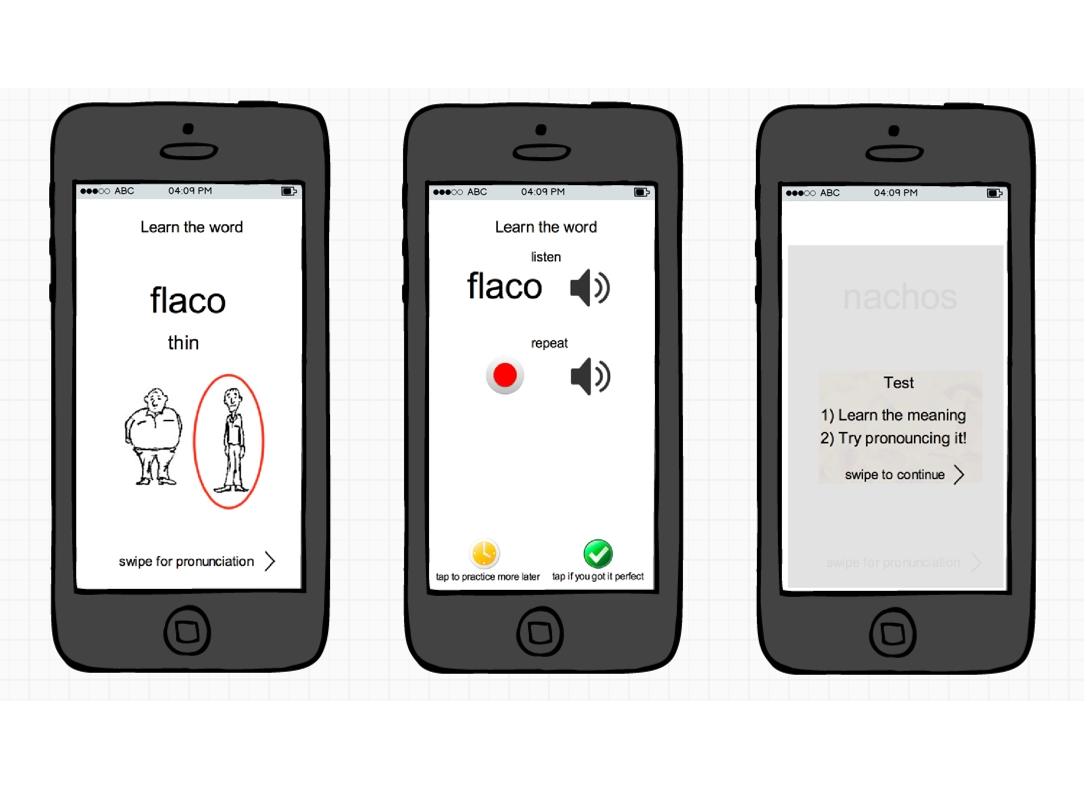Spanish pronunciation training
One of my favorite courses at the Master in Human-Computer Interaction was Ken Koedinger’s E-Learning Design Principles. We studied research-backed best practices to design effective systems for human learning.
I’ve always been enthusiastic about languages, having learned English at an early age, Swedish and Portuguese later. I have noted that people who are more confident in their speaking abilities learn quicker, and my hypothesis is that when people attain good pronunciation skills early on, they become more engaged in language-learning activities. Hence, I made my course project about helping native English speakers without previous pronounce Spanish understandably.
Due to the rigor of the course, only an early Wizard of Oz prototype was completed, but there were some interesting early findings.

Instructional Design Principles
I followed guidelines laid out by Mayer and Clark in their seminal book on the subject.
- The Multimedia Principle: include both images and text in learning activities.
- The Segmenting and Pretraining Principle: focus on instructing the basic building blocks (e.g. phonemes before words).
Process
I put together a deck of virtual flash cards with Spanish words, their English translations and a helpful image, under the assumption that learners would be more engaged if they understood the words they were uttering.
I provided two kinds of pronunciation advice in English: at the phoneme level (e.g. say the letter “a” as you would in “father”), and at the word level (e.g. say a-sool for the color “blue”). In this very low-fi prototype, the system’s pronunciation was voiced by me.
The first user tests showed that:
- People often skip reading the pronunciation advice, and want to interact with the exercise right away.
- People struggle with a few key sounds that do not exist in English (ɾ and ʎ).
- Pronunciation advice at the word level can interfere with people’s spelling in Spanish later on.
Following these results and feedback from Spanish professors, I decided to make the first activities teach individual phonemes before moving on to words (validating the Segmenting and Pretraining principle that I had ignored for the sake of engagement). I also removed word-level pronunciation advice.
Second iteration tests showed that students were visibly less engaged by having to learn phonemes rather than words. We need more data from a more sophisticated system with real users to conclude if this decrease in engagement leads to improved proficiency in the long term (that is, if the phoneme-learning task has a desirable difficulty). I am looking for opportunities to continue the research.